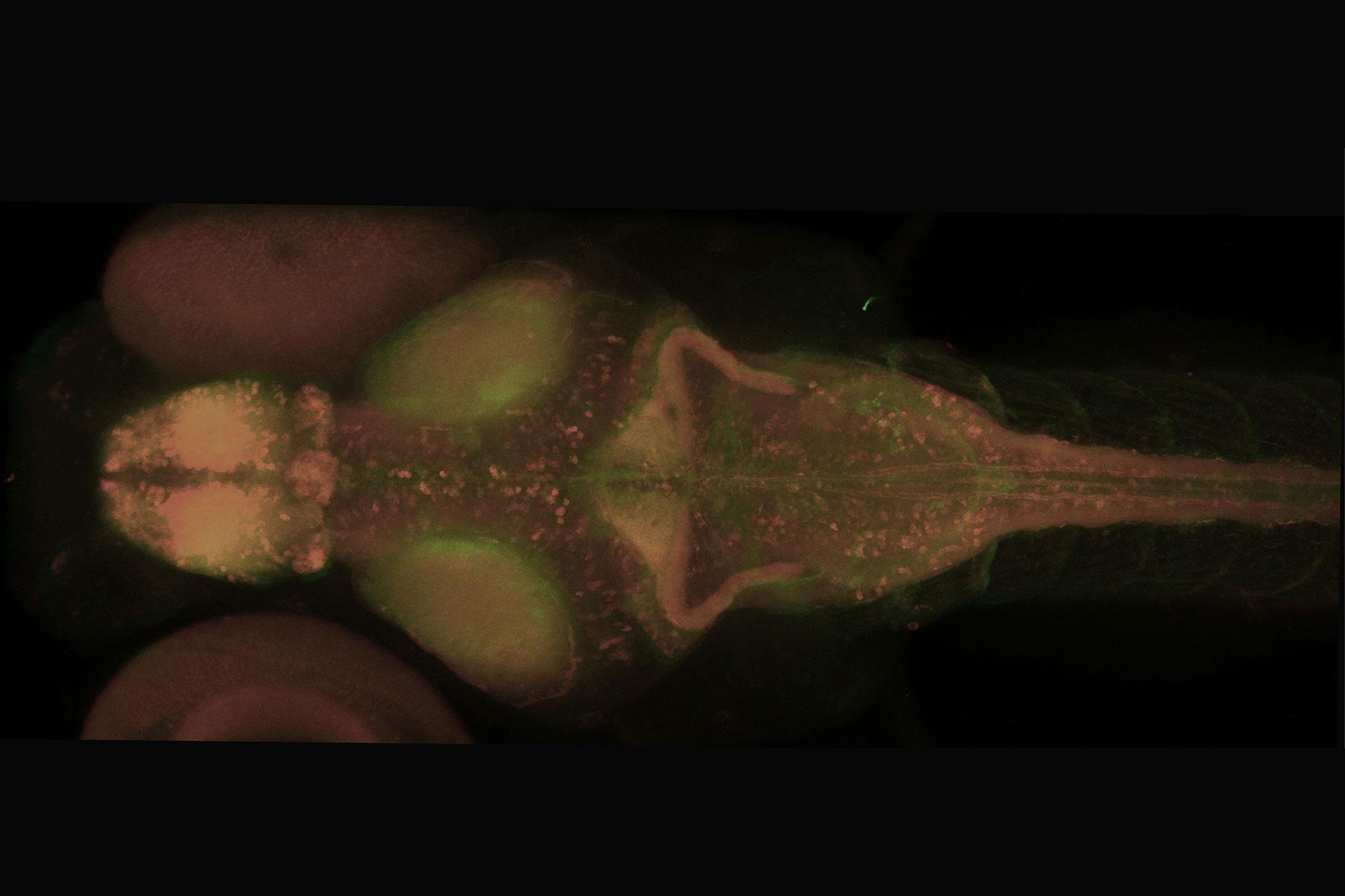Fish smell certain insecticides and try to avoid them

Swimming to clean waters – zebrafish larvae react to active substances such as imidacloprid and diazinon. And are stressed by them.
Insecticides that are sprayed on fields sooner or later end up in bodies of water. It is not yet sufficiently clear what effect this has on the ecosystem. In a study co-funded by the SNSF, a team from the Eawag aquatic research institute found that fish larvae can smell some insecticides and react with stress.
For the experiment, the researchers sprayed insecticides of different classes into a water chamber, then filmed the movement patterns of the zebrafish larvae. These were found to move to the clean side of the chamber when imidacloprid and diazinon were added. When their olfactory cells were blocked by a chemical, however, the larvae did not avoid the substances. This confirmed that they detect the insecticides through their sense of smell.
Stress level increases
To find out what reaction contact with the insecticides triggers in the brains of the larvae, the researchers examined them immediately after the experiment using a method that marks active brain areas. The areas that are involved in a stress response were among those showing the greatest differences compared to the control group.
Imidacloprid is approved in Switzerland, whereas diazinon was banned in 2011. The concentration of the two substances in Swiss waters varies depending on the weather and season. The quantities used in the experiment are in a very high, but at times quite realistic range, says project leader Colette vom Berg.
Although the fish larvae avoid the insecticides, these evasive manoeuvres also cause stress that could harm the organisms in the long run. These effects need to be investigated more closely and, if necessary, taken into account when setting limit values.
S. Könemann et al.: Sub-Lethal Peak Exposure to Insecticides Triggers Olfaction-Mediated Avoidance in Zebrafish Larvae. Environmental Science & Technology (2021).
Doi: https://doi.org/10.1021/acs.est.1c01792
The publication is available as a PDF document on
.